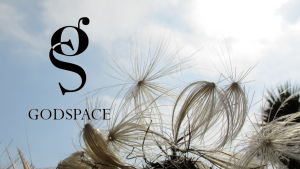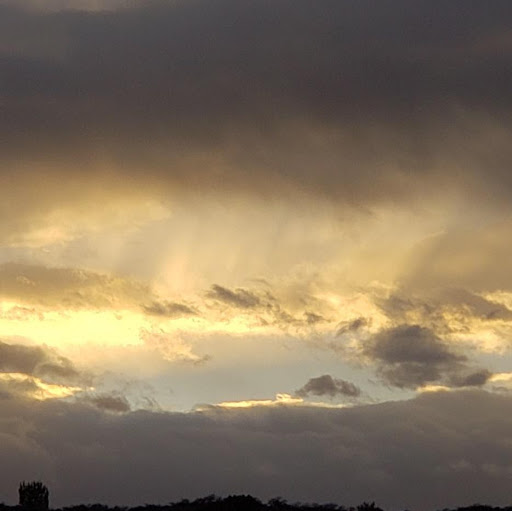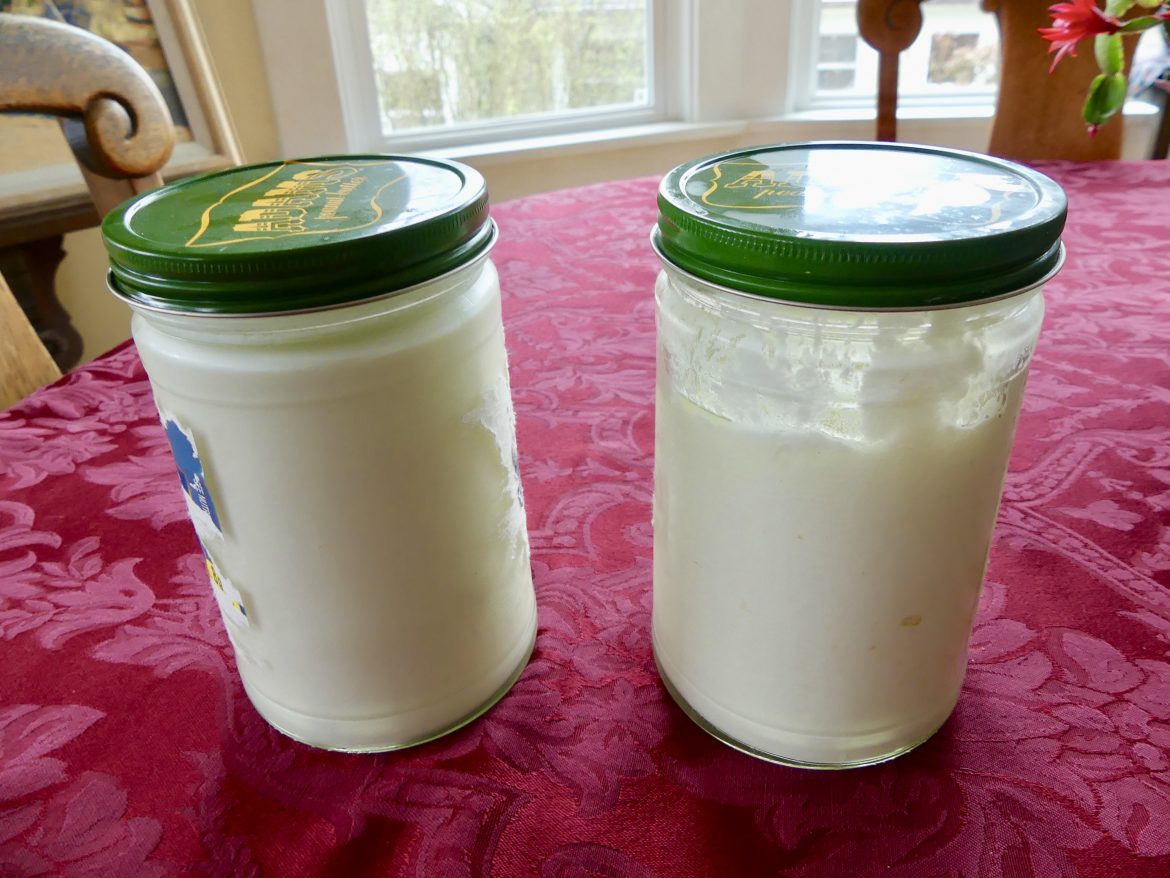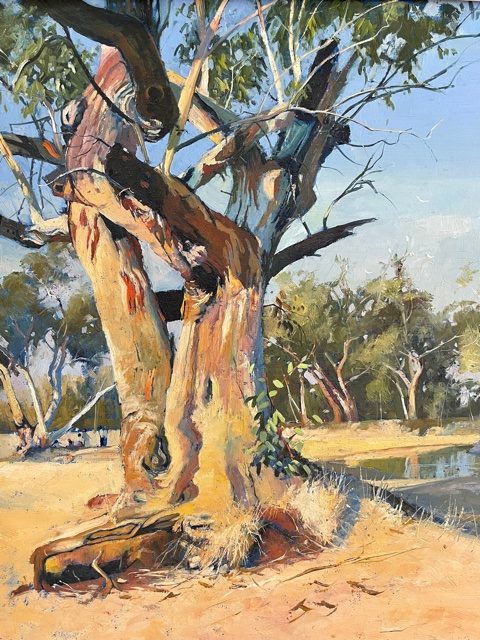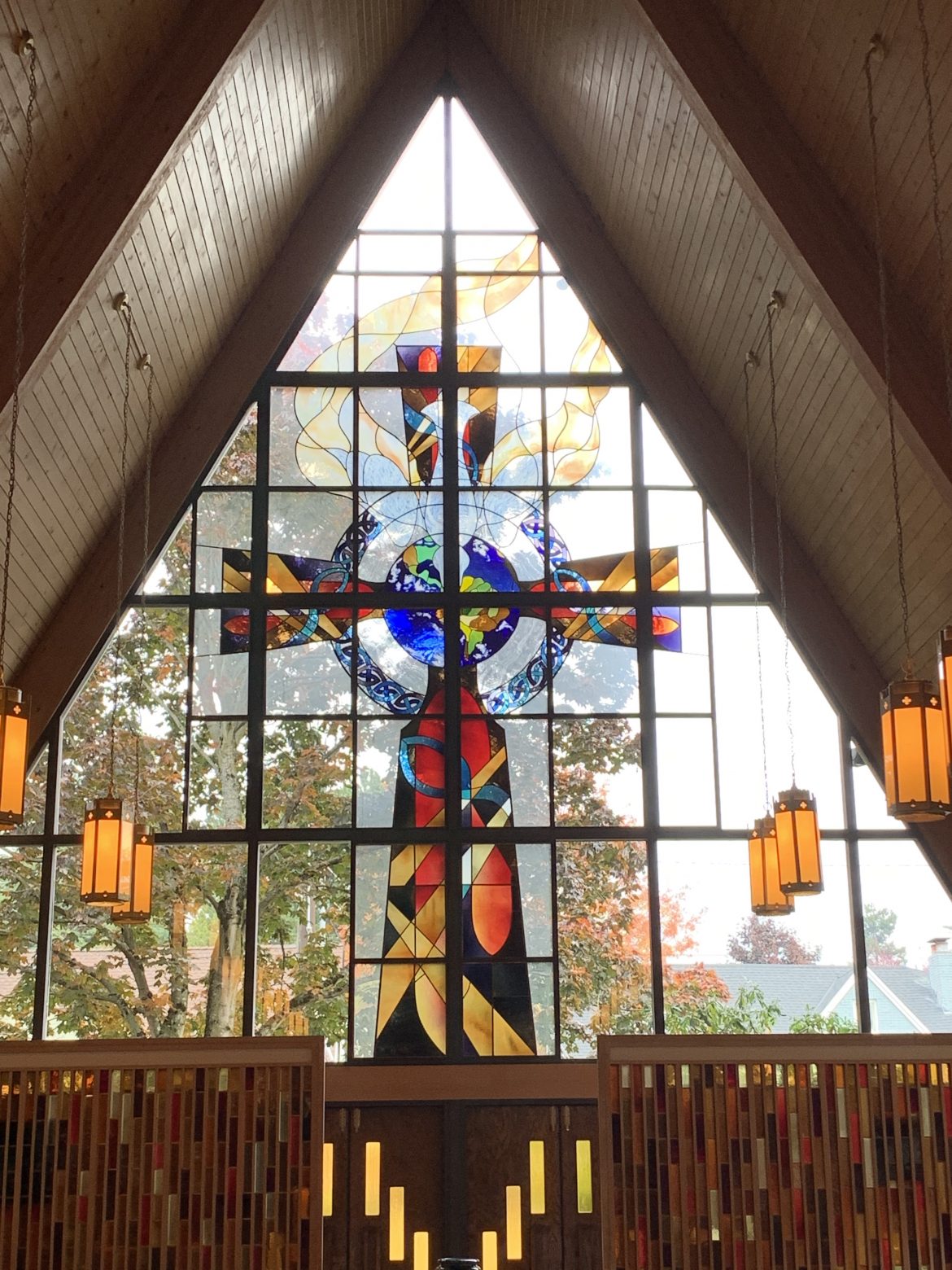by Tom Sine,
“Southern states have a ‘real vulnerability’ to Delta Covid variant this summer, warns Dr. Peter Hotez
- Dr. Peter Hotez warned that Southern U.S. states could feel the impact of the highly transmissible Delta Covid variant as early as this summer, due in part to low vaccination rates.
- ‘Here in the South, particularly in Louisiana, Mississippi, we’re seeing really low vaccination rates. And less than 10% of adolescents are vaccinated in many of these southern states, so we have a real vulnerability here,’ Hotez said.
- Just around 30% of the population in many Southeastern states is fully vaccinated, according to data from the Centers for Disease Control and Prevention.”
There are an alarming number of hospitals starting to fill up again not only in the Southern states but in other parts of the country as well.
“The number of people catching the virus has risen in more than half of the states over the past two weeks. And 18 states have greater numbers of new infections now compared with four weeks ago, including Arkansas, Florida, Iowa, Missouri and Oklahoma, where new daily cases have doubled.
‘It’s an early trend,’ Nuzzo says. ‘Unfortunately looking at what’s happening in individual states, I do worry we will continue to see national numbers increase.’
The number of people getting hospitalized for COVID-19 has also started rising again in nine states, according to Johns Hopkins: Arkansas, Florida, Hawaii, Iowa, Missouri, Nebraska, Texas, Wisconsin and Mississippi.
‘I expect that more states would join that list in a few weeks as they continue to see case increases,’ Nuzzo cautions.
For example, Newton County, Mo., has seen a 182% increase in new infections; Nacogdoches County, Texas, has seen a 632% increase. Ottawa County, Okla., has seen infections soar 828%.” (Source: Centers for Disease Control and Prevention as of July 1-7, 2021)
As public health experts have warned for weeks, the Delta variant of COVID-19 is now the dominant strain circulating in Mississippi, causing a spike in cases and hospitalizations.
Delta is now also the dominant variant across the United States. Nationally, the average number of new cases has started to trend upwards due to localized Delta outbreaks in places, like Mississippi, that have low vaccination rates.
“State Health Officer Dr. Thomas Dobbs has repeatedly stressed that Mississippians have the choice of getting vaccinated or contracting COVID-19, and that in every scenario a vaccinated person is going to have a better outcome.”
“The Delta variant has considerably increased the already high risks posed by the virus to unvaccinated people.” “The Delta variant, first identified in India, is believed to be about 60 percent more contagious than the Alpha variant and up to twice as contagious as the original strain of COVID-19.”
“With over 2 million shots administered, only 31% of Mississippians have been fully vaccinated.”
People are simply declining to get their shots, and this is keeping Mississippi in last place.
DELTA VIRUS ALERT… JOIN THOSE VACCINATING NOW!
Pastor W.L. Hightower, who is the pastor of New Zion Baptist Church in Louisville, led his congregation in getting vaccinated to influence others in this African American Church to gain protection from this deadly new COVID strain.
W. L. Hightower, pastor of New Zion Baptist Church in Louisville, received a vaccine, “administered by Mississippi State Department of Health Pharmacist Kathryn Ward at New Hope Baptist Church in Jackson. Hightower was among a number of African American faith leaders from across the state to receive the COVID-19 vaccination Monday at New Hope Baptist Church in Jackson.” Hopefully those in their churches and communities will follow their example to reduce the threat of this new Delta Virus.
We urge all readers to follow the example of this Baptist minister and take time this week to join those getting vaccinated where you live to avoid dealing with this deadly new Delta Virus. Be sure to take someone from your church or neighborhood with you to get vaccinated too. With God helping us, there is no reason for young and old alike to put their lives and their health at risk.
Please share this alert regarding the need for all of us to get vaccinated as soon as possible!
This post was adapted from newchangemakers.com where it was originally posted.
Want to learn more about summer practices and connecting with God through summer symbols and experiences? Check out Christine Sine and Lilly Lewin’s Making Time for a Sacred Summer Online Retreat. This course allows you 180 days of access for only $24.99!

by Lilly Lewin,
I was invited by a friend to create a painting for her new home. I was inspired to create from this verse…
‘But blessed is the one who trusts in the Lord, whose confidence is in him. They will be like a tree planted by the water that sends out its roots by the stream. It does not fear when heat comes; its leaves are always green. It has no worries in a year of drought and never fails to bear fruit.’
Jeremiah 17:7-8
When you look at this painting. What do you notice? What speaks to you?
Sit with the painting and ask Jesus to speak to you.
Have you been feeling rooted or uprooted lately?
How do you need to be refreshed?
What is the path, the journey, the pilgrimage that Jesus has you on right now?
What path or journey is Jesus inviting you to go on with Him?
Can you be thankful for the places you’ve been as well at the uncertain things about this year?
Talk with Jesus about these things.
What areas of drought do you need to confess and give to Jesus?
What fruit are you grateful for today?
Who are the people who have brought love and grace your way? Pray for them.
Take time for confession and for praise in response to what Jesus says to you.
Let’s pray together….
God of our pilgrimage,
you have led us to the living water:
refresh and sustain us
as we go forward on our journey,
in the name of Jesus Christ our Lord.
From the Lectionary App of the Church of England by Church House Publishing
YOUR TURN: Find a favorite verse or passage and create something from it… write a poem, journal, collage, draw… doodle. Allow the Creator to inspire your creativity!
©lillylewin and freerangeworship.com
And you still have time to try the GIFT of a SACRED SUMMER… one of the GIFTS is CREATIVITY!
Join the Godspace Light Community Group on Facebook! This is a place to discuss a whole-life faith that embraces spirituality especially contemplative, Celtic, & creative spiritual practices, environmental & economic sustainability, social & environmental justice, and gardening & creation care.
post and all photos by June Friesen,
God? Are You there? Have you ever felt like God was not/is not there? Have you ever wondered whether among the trillions of people worldwide if you were ever even a name or person who crossed His mind, maybe that is how you have been feeling or feel even right now? In the past day or two, I, too, have been wondering with many questions and again I find myself in the place of asking God, “Why?” I went to the Psalms as it is usually the place where I can find solace and comfort and often times even the words that express my heart’s cry. Today, I was directed to Psalm 142.
Psalm 142 (The Message)
1-2 I cry out loudly to God, loudly I plead with God for mercy.
I spill out all my complaints before him, and spell out my troubles in detail:3-7 “As I sink in despair, my spirit ebbing away, you know how I’m feeling,
Know the danger I’m in, the traps hidden in my path.
Look right, look left— there’s not a soul who cares what happens!
I’m up against the wall, with no exit— it’s just me, all alone.
I cry out, God, call out: ‘You’re my last chance, my only hope for life!’
Oh listen, please listen; I’ve never been this low.
Rescue me from those who are hunting me down; I’m no match for them.
Get me out of this dungeon so I can thank you in public.
Your people will form a circle around me and you’ll bring me showers of blessing!”
Why do I like this Psalm? It gives me permission to cry, permission to ask loudly for help, perhaps even yell for mercy. I am falling… I am losing all hope… I wonder… ‘why me God?’ I do not know where you find yourself today, but I am definitely feeling like the picture below with this twig suspended in midair separated from the tree that gave/gives it life. Is there really any hope – well, God’s presence is kind of like this – I may feel suspended in midair without hope, wondering if I will just flutter to the ground in death unnoticed?
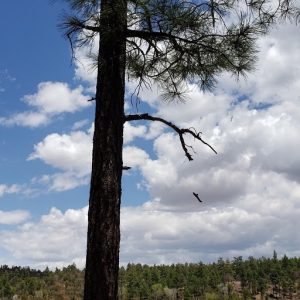
by June Friesen
GOD – I AM TRYING TO HANG ON
Suspended in mid-air
And it seems that few if any seem to care,
The breezes toss me to and fro
And I wonder when I will fall to that eerie space so far below?
Sometimes God it seems
That just when I have conquered one issue
Another slams me without warning
Causing me to once again go into a deep mourning.
It would be so much easier God
If at this time I did not just feel like a clod
Of dirt and water that feels undone once again –
Just when I thought I had conquered one last pain.
God I am trying to hang on desperately –
But You know that it definitely
Is the loneliest place yet where I am finding myself
Because really there is no one, absolutely no one who really knows this gulf…
(EXCEPT You God).
And so today God, I am going to try to reach out to You once again –
It is one of the hardest things that I have had to try to find faith to do –
It would be so much easier if I could see You,
If You were not so invisible – if only my eye could see You
If only …… if only……
If only let it be for me like it is for this twig –
Suspended in air, hanging, swinging, depending only on You God
My one and only invisible gift of courage and strength
Found in You and in You alone.
Amen
(June Friesen 6/2021)
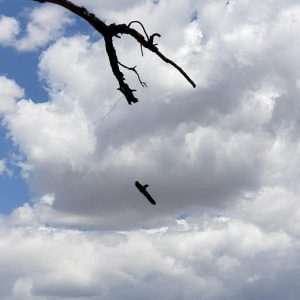
by June Friesen
I am not sure where you may find yourself today. Every one of us is facing different situations some of them just life situations and some of them seasonal situations and some of them related to the recent and ongoing Covid pandemic. It may be hard for you to see in this final photo that there is actually a fishline filament that is holding this twig suspended in air. As I stood and pondered this as I was hiking, it took me some time to see how it was that this twig was there. It is so like God in our lives. Sometimes we really do feel like a connected branch as it talks about in John 15 but if you are anything like me there are many times that I feel more like this twig. Presently I am struggling with my full vine connection in a situation – and I am sure there are others in situations who are also wondering if they are the twig suspended – and if the strand will all of a sudden let them drop when they are at their weakest point. I am thankful that God has assured us that when we are weakest then He is strongest. As Proverbs 3 tells us let us trust in God with our whole heart today and every day – especially when we feel suspended.
God, we are so blessed that even when we do not stay closely connected to You in the times of difficulties You are an ever-present, unseen presence. God, may this floating twig continually remind us how closely and carefully You hold Your children in this world. Thank you for making me Your child not just today, but every day. Amen and amen.
Embark on this healing journey with Christine Sine, Lilly Lewin, and Bethany Dearborn Hiser with the Time to Heal Online Course. Each session is lead by one of our instructors and allows you 180 days of access for only $39.99. The goal of this course is to provide time, space, and tools to work toward healing.
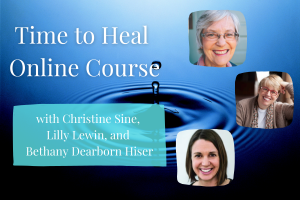
by Christine Sine,
With our growing concern for sustainability and our concern for rising prices, we all feel a little overwhelmed but there are lots of ways we can live more sustainably and save money at the same time.
I homemake our yoghurt that we eat with berries from the garden and homemade granola in the morning. It only takes me about 15 minutes to make enough yoghurt to last me for a couple of weeks. I have been reading a lot lately about the impact of plastic on our environment – the horrific plastic seas growing in our oceans – this one in the Caribbean and the even bigger Great Pacific Garbage Patch and am determined to cut down on my own contribution to this problem not just but eliminating single use plastic but other forms of plastic as well.
To me, it is an important stewardship issue that I feel all Christians need to be aware of and prayerfully consider both their contribution to the pollution of our planet and the steps, however small they can take to reduce plastic and other forms of waste. I posted these suggestions like using public transport more, walking, committing to plant-based diets, and alternative energy are small steps we can all take, and most of them don’t just reduce pollution, they save money too.
A Small Step For Me
My yoghurt making is only a small step; it will only reduce plastic waste by 50 tubs each year, as well as save me $250. But for me, it is drawing a line in the sand and saying, “I must do more.” Like any journey, this journey into a life with less waste must begin with a single step and this is mine. And in doing it I become aware of what the next steps are that I need to take.
Inventory Where Your Waste Comes from
Making yoghurt has helped me to evaluate my lifestyle – where I am wasteful and where I already do “the right thing”. Sometimes I feel really virtuous because there is much I already do that helps reduce waste but there are a lot of other things I can improve on that I am considering. Have you done a waste inventory before? If not, start by creating a stack of all your food packaging for a week. Look at the stack and point out the single use plastic containers and bags that you use. Think about ways that you could reduce this waste by either reusing one or purchasing a more sustainable version of the item. More ideas on this in the “Swap Out Your Household Plastics” section below.
Those single use K-cups, now used by 1 in 3 American households, are particularly bad as this article argues and evidently will survive in the landfill for a good 4-500 years. They are also expensive so if you are really wanting to establish a more sustainable lifestyle they are a good item to consider ditching.
Cook Your Own Meals
Making meals from scratch is one great waste reducer I am good at and for me, it is both relaxing and satisfying. I grew up in a family where fast food and packaged meals were unheard of so this is easy for me, but I know some people find it overwhelming. So think of some small steps you could take. What is one simple thing you could do to reduce this kind of waste?
If you don’t feel you have time to cook all your meals from scratch, think about the ones that have the most packaging – like breakfast cereal. I have made my own granola for many years. Not only does it save me hundreds of dollars a year, it also keeps a lot of packaging out of the landfill. You may not like granola but here are some other recipes for cereal – everything from grape nuts to cornflakes can be homemade, though some of these look as though they will take quite a bit of time. What is one meal that you could start making from scratch without increasing the pressure on your life?
Perhaps you could invite friends over to cook meals together then divide these up into containers that can go in the freezer – homemade TV dinners that are more nutritious and more environmentally friendly than the store-bought kind. An added advantage is that you could buy ingredients together in bulk, saving even more packaging and dollars on the way. What is one food item you use regularly that you could buy in bulk and reduce packaging?
Grow Your Own Herbs
You don’t need to be a master gardener to grow your own herbs but it can save a lot of money and help you avoid a lot of small plastic packages. The plant itself, not even starting from seed, costs about the same as one small plastic package of herbs but the plant will continue to produce. Thyme, mint, oregano, rosemary and basil will all grow in small pots on the windowsill. Experiment with your favourites and have some fun. Most of them are also hard to kill.
Join Your Local Buy Nothing Group
If you have a Facebook account and live in the U.S., look up your neighborhood Buy Nothing Group for more information about these groups. This is a wonderful tool to recycle and reuse things, as well as a way to meet more of your neighbours and show generosity! For example, when I end up with too many tomato starts, I advertise them on our local Buy Nothing group. I have not only met a lot of grateful people but have often been gifted with other vegetable starts in return.
Swap Out Your Household Plastics
Living in Seattle where plastic bags are no longer available in supermarkets, it is easy for me to think I am doing my part. But this really is the tip of the iceberg. What I was stunned to find out this week is that toothbrushes are one of the biggest plastic contributors to landfills. Most of us use 2-3 per year which doesn’t sound like much but when you consider that these will still be siting there in 100, possibly 1,000 years time, it is mind boggling. And there are affordable alternatives – bamboo toothbrushes can be as cheap as $2 a piece and are compostable. They also make bamboo replacement heads for electric toothbrushes or fully bamboo electric toothbrushes too.
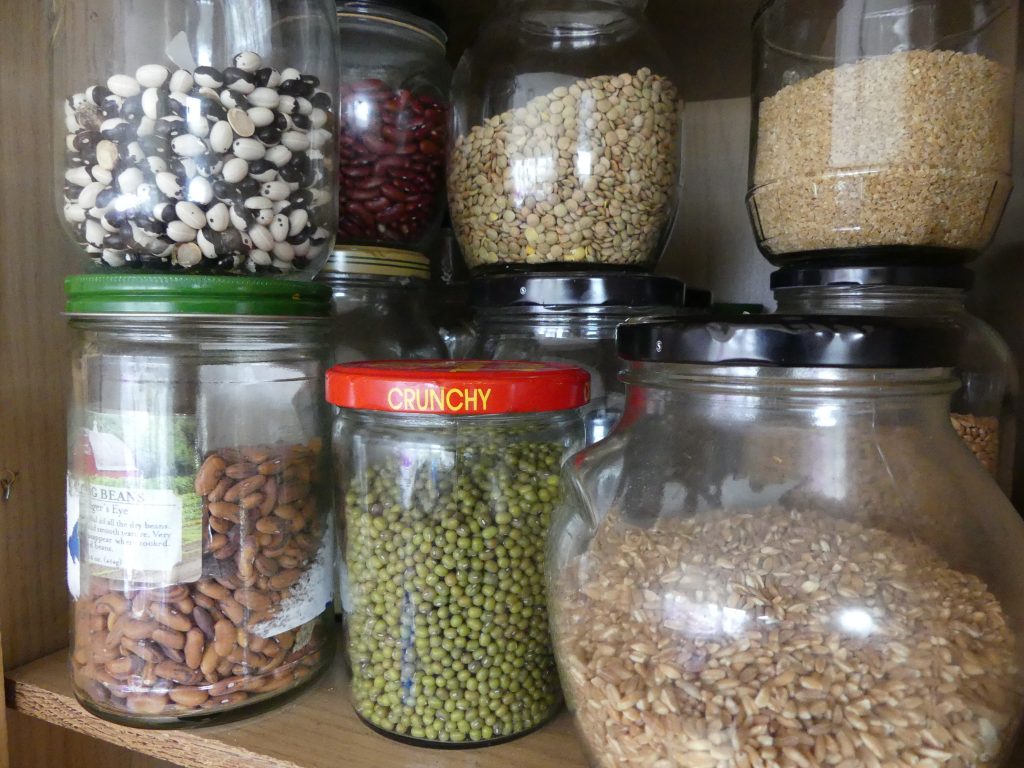
In her post, Switch Out the Plastics – Simple Swaps, Hannah has some excellent suggestions on how to reduce plastic in our lives. One simple idea she mentions is replacing plastic storage containers when they wear out with glass. I find I don’t even need to buy new containers because we use empty glass peanut butter jars for my yoghurt, large olive jars for shelf storage items, and small jars that chicken bouillon comes in for freezing sauces. If they are going in the freezer, just make sure you leave enough space at the top so that they don’t crack when the contents expands… and if you live in Seattle and need a few extra storage jars, I have a lot I would like to share.
If you want to get a jumpstart on reducing plastics in your home, join the Team for Plastic Free Ecochallenge by YES! Magazine.
What To Do When You Order Online
Don’t you hate all the packaging that online purchases are often wrapped in? Evidently, we can do something about it. If you have a preferred place you purchase from, ask them for only recyclable or complain where it hurts like on their social media sites. This article is a fascinating look at some of what is happening to packaging to help reduce waste particularly because of consumer pressure. This has inspired a lot of companies to become more waste conscious.
Amazon, I suspect, is one of them. Amazon is working to make their packaging more recyclable. Now that is fine for me living in a community where all our recycling goes out on the curb every two weeks, but I know it is a challenge for those who have to drive miles to a recycling facility. Unfortunately, some of Amazon’s affiliates are not as good and I still have items arrive in Styrofoam packets. Some of this I am able to recycle in the bottom of planters. It means I need less soil and it makes the pot lighter. One simple way to help reduce this kind of waste is to make occasional purchases of multiple items that all arrive in one box rather than using the “Buy now with one click” button. Where do you make most of your online purchases? Is there a way to consolidate these or to request recyclable packaging?
What Is Your Response?
Prayerfully watch either of the videos embedded in this post.
Living in a way that is sustainable for our planet isn’t easy for us. More and more people are opting for a zero waste lifestyle. Unfortunately, for many, it is not even on the radar when we think of what it means to be a disciple of Christ. Yet I think it is an important part of what Christ calls us to be and to do. We are meant to be responsible stewards of this earth, enabling it to flourish and thrive. I hope that you will take time this week to prayerfully consider changes in your lifestyle that God may be prompting you to make in order to be more faithful to the call to follow Christ.
Our house just started a membership with Ridwell which is a local business that is quickly expanding and currently serves over 30,000 homes in Seattle and Portland. They pick up waste and garbage that we usually throw away but reuse it for other purposes like turning plastic film bags into decking material. We are very excited about this new program as our household looks to reduce the plastic waste we accumulate with 8 people living here.
Basic Homemade Yoghurt

Homemade Yoghurt
(To make a gallon, just quadruple this recipe.)
- 1 qt. milk (any type)
- 1/4 c. dry milk powder for a thicker product more like Greek yoghurt (opt. I don’t use this)
- And/or 1 T. thickener; such as carrageenan, pectic, or gelatin (opt.)
- 2 T. plain yogurt with live cultures. You don’t need special yoghurt starters but if you are nervous about experimenting like this, you might like to try with a yoghurt starter the first time.
- Combine the milk, milk powder (if using), and thickener (if using) in a pot. Heat the mixture to 180F.
- Let the milk cool to 120F off the heat. Add the yoghurt; mix well.
- Keep covered, at 120F, for at least 6 hours, or until set to the consistency of thick cream. (For this step, I pour it into old glass peanut butter jars with metal lids and cover it with a warm blanket and place in a warm room. Alternatively, put it in your oven preheated to 150F and turn it off. Wrap the yoghurt in a blanket or towels and set it in a pan all wrapped up. After three hours REMOVE THE JARS , reheat the oven, turn it OFF again and put the jars back.)
- Refrigerate and serve cold. This will keep, refrigerated, for up to 2 weeks.
- Remember to save some of the old yogurt for your next batch!
Want to experience more of the awe and wonder that God offers us? Check out the Gift of Wonder Online Retreat by Christine Sine. This retreat allows for 180 days of access for only $39.99 so you can move through the sessions at your own pace.
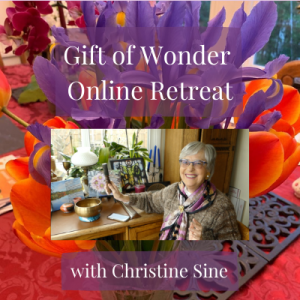
Poem and images provided by Gilbert George 2021, All Rights Reserved, used with permission.
I turned in my path, glancing
towards the lake, while walking
behind two dogs, one still learning
about walking with humans on
that strange leash contraption.
I saw the white and pink starbursts
of water lilies in full bloom.
Their patterned beauty lent an extra
stillness to an unnavigable nook
of a lake formed by the collapse of
a sand dune blocking the flow of
a stream to the sea.
The dunes eventually give way
to the roaring of the sea
pounding the rocks of today
into the sands of tomorrow.
Nestled in the rocks are pools of life
filled with crabs, starfish, anemones,
and sea urchins of a purple so radiant
as to arouse envy in even
the most powerful of emperors.
This beauty, found near the
basking of the seals and the
salty tang of the sea spray
creates a soul stilling feast
of the senses, instilling wonder
once again into this cynic’s heart.
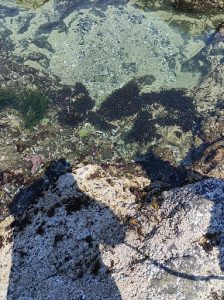
Reflection:
- What are some things in nature or your home that instill awe and wonder for you?
- Think about how you obtained that item or how the particular thing in nature got there for you to see. Thank God for the encounter with creation or for the item that you own.
- How can you continue this awe when you think about people in your life? Who are you grateful for? Who needs prayer? Who needs justice and love?
Join the Godspace Light Community Group on Facebook! This is a place to discuss a whole-life faith that embraces spirituality especially contemplative, Celtic, & creative spiritual practices, environmental & economic sustainability, social & environmental justice, and gardening & creation care.
by Christine Sine,
Welcome to Meditation Monday. This week I am trying something different – I am sharing the meditation both as a video and as a written meditation. Last year when I created my Psalm 91 meditation garden and shared it as a video I asked if people would like to see more videos and the resounding answer was yes. It wasn’t possible at the time but finally I am able to plan to make this a more regular practice so please let me know what you think of it.
Today, I want to talk to you about Psalm 1. It is one of my favorites and in the aftermath of the intense heat we experienced last week, it has taken on new meaning.
Psalm 1:1-3 The Passion Translation
What delight comes to the one who follows God’s ways!
He won’t walk in step with the wicked,
nor share the sinner’s way,
nor be found sitting in the scorner’s seat.
His passion is to remain true to the Word of “I AM,”
meditating day and night on the true revelation of light.
He will be standing firm like a flourishing tree
Planted by God’s design,
deeply rooted by the brooks of bliss,
bearing fruit in every season of life.
He is never dry, never fainting,
ever blessed, ever prosperous.

Red River Gum – PR Pomroy
When I think of a tree planted beside a stream, I think of this painting with an Australian red river gum prominently in the foreground.
Red river gums are common in Australia, especially in the dry interior. They always grow along the banks of water courses some of which dry up periodically and then are inundated with flooding waters. Red river gums can withstand both drought and flood – being able to stand up to 9 months of emersion in the flood waters.
This tolerance is because of their extensive root system. In drought, they reach down, sometimes 30 to 40 feet, to the subterranean water systems. Some of their roots also contain a spongy air-filled tissue that accumulates and transports oxygen in waterlogged soils.
Red river gums grow huge and can live up to 1,000 years. They often provide shelter from the heat for both animals and humans and one of my childhood delights was to come across a herd of kangaroos lounging in the shade under their canopies.
Their roots really do go down deep.
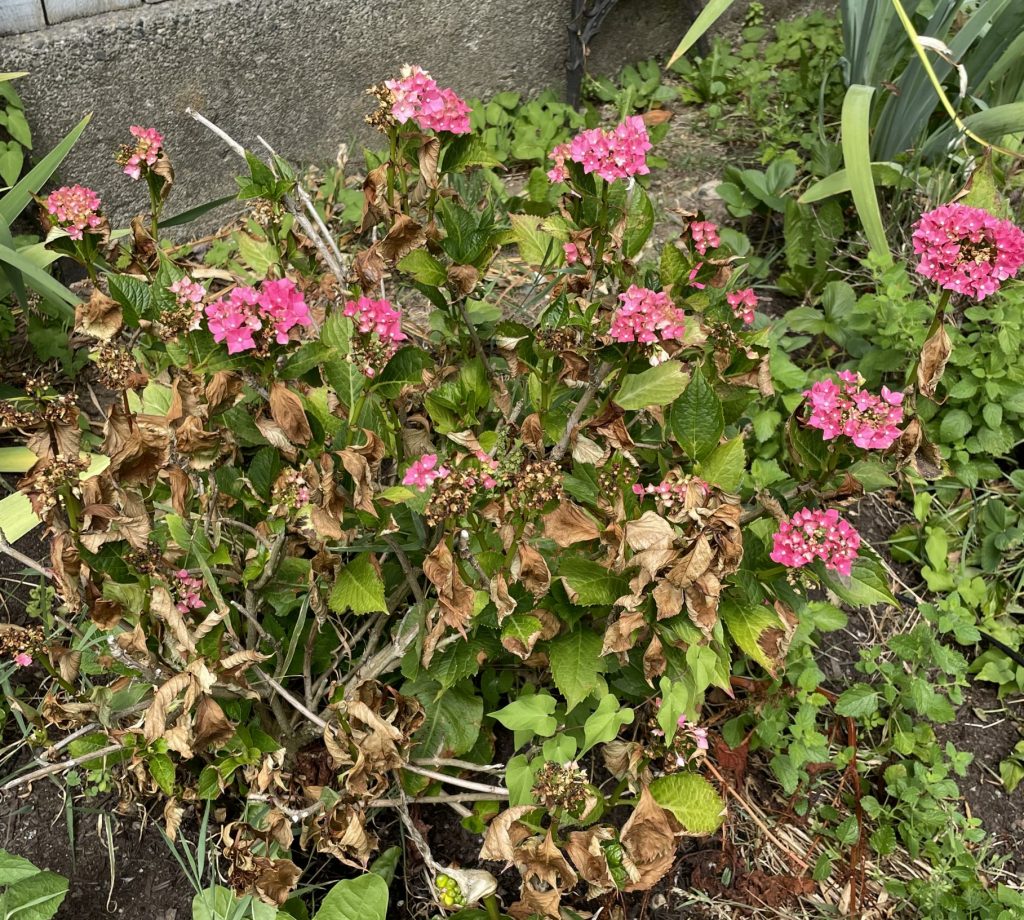
Heat damaged hydrangea
My hydrangeas on the other hand, have shallow roots that probably remain in the top 6” of the soil. They do better in shade than in direct sun and as you can see, these ones did not do well when the heat hit. Such a vivid contrast to the trees in my painting.
We all need deep root systems like the Australian red river gum. We need to be able to survive in times of drought as well as flood when we feel inundated by the world’s problems and the challenges of our own lives. In Australia, drought is often followed by flooding rains so being able to survive in both situations is essential.
This last year has flooded all of us with downpour after downpour of rain and in its aftermath, we feel dried out as though we are in the middle of a drought.
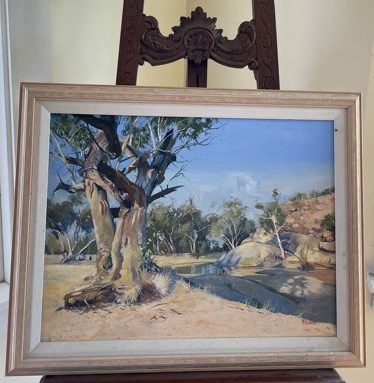
Red River Gum – PR Pomroy
So as I sit here today contemplating this painting, I wonder, “What helps build my root system so that it goes deep into the hidden sources of God’s water beneath me? What within me stores oxygen for those times when I feel flooded by the challenges both of my life and of our world?”
Three things come to mind that I do on a regular basis and you are probably sick and tired of me talking about them, though I feel we can never remind ourselves too often.
- Morning contemplative practices like breath prayers, and meditating on my contemplative garden. I never get tired of sitting in my sacred space in the early morning drinking in the presence of God in the stillness around me.
- My awe and wonder walks both around the garden and through the neighbourhood. Absorbing the beauty and wonder of God’s created world enables me to worship God with all my senses both growing deep roots and storing oxygen for those torrential rains.
- Regular retreats. Nothing is as soul renewing for me as the quarterly retreats that Tom and I take. Like most of us, I lead a busy life and the busyness alone can flood my soul with negative thoughts and emotions that dry me up inside. Without these retreats, I would not survive.
I love to see the scriptures come to life as I examine them with real life examples from God’s created world, as I was able to do with Psalm 1 today. I love the imagery of a tree deeply rooted by a stream where it can grow down to the deep subterranean water sources. Whenever I see a red river gum on my trips to Australia, Psalm 1 comes to mind. It is such a wonderful connection that helps deepen my faith in surprising ways.
What about you? What have you seen, or heard, or touched or tasted this week that connects you to the imagery of the Psalms or other scriptures? In what ways has this experience strengthened your faith and your connection to God? What kinds of practices do you perform on a regular basis that encourage you to strengthen you faith in this way?
Want to learn more about summer practices and connecting with God through summer symbols and experiences? Check out Christine Sine and Lilly Lewin’s Making Time for a Sacred Summer Online Retreat. This course allows you 180 days of access for only $24.99!

A contemplative service with music in the style-of-Taize. Carrie Grace Littauer, prayer leader, with music by Kester Limner and Andy Myers.
Permission to podcast/stream the music in this service obtained from One License with license #A-710-756 with additional notes below:
“Christ Be With Me (Prayer of St. Patrick)” – Text from the Lorica, or the Prayer of St. Patrick. Song by Ruth Cunningham, used with permission. All rights reserved. www.ruthcunningham.com; www.youtube.com/ruthreid/;
Instagram: @ruthreid11
“Aber Du Weisst, “Nada Te Turbe,” and “Kristus din Ande” are songs from the ecumenical Taize community in France. Copyright and all rights reserved by GIA/Les Presses de Taizé.
Thank you for praying with us! www.saintandrewsseattle.org
As an Amazon Associate, I receive a small amount for purchases made through appropriate links.
Thank you for supporting Godspace in this way.
When referencing or quoting Godspace Light, please be sure to include the Author (Christine Sine unless otherwise noted), the Title of the article or resource, the Source link where appropriate, and ©Godspacelight.com. Thank you!




